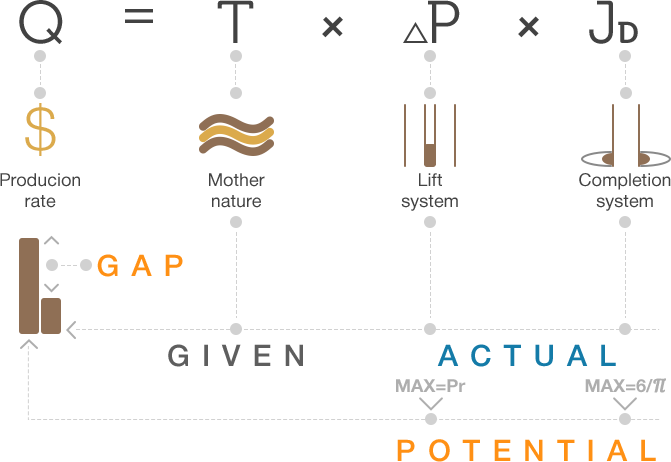Difference between revisions of "Production Potential"
From wiki.pengtools.com
(→Achieving potential) |
|||
| Line 42: | Line 42: | ||
Can [[Production Potential]] be achieved? | Can [[Production Potential]] be achieved? | ||
| − | The ideal, of producing and recovering at potential, is rarely obtained in practice. [[29+ reasons why you can not increase the production |Reasons]] for this vary from company to company, but more often than not, the reason is | + | The ideal, of producing and recovering at potential, is rarely obtained in practice. [[29+ reasons why you can not increase the production |Reasons]] for this vary from company to company, but more often than not, the reason is [[Production Potential]] is not known and therefore not managed. |
| − | |||
== References == | == References == | ||
Revision as of 15:43, 11 July 2018
Brief
Production Potential is the maximum rate that can be delivered by Well, Pattern, Block or Reservoir.
Math and Physics
The Darcy's law can be written as:
where:
 is the oil or gas production rate,
is the oil or gas production rate, is the Reservoir transmissibility and is given by the Mother Nature,
is the Reservoir transmissibility and is given by the Mother Nature, is the Lift System Drawdawn which is set by the operational engineering practices[1],
is the Lift System Drawdawn which is set by the operational engineering practices[1], is the Completion System dimensionless productivity index which is set by the design engineering practices[1].
is the Completion System dimensionless productivity index which is set by the design engineering practices[1].
The rate  is maximum then
is maximum then  and
and  are maximum.
are maximum.
Maximum 
The drawdown is:

The maximum drawdown is reached then the flowing bottomhole pressure,  , so:
, so:

Maximum 
The maximum possible stimulation potential is pseudo steady linear flow with:

Achieving potential
Can Production Potential be achieved?
The ideal, of producing and recovering at potential, is rarely obtained in practice. Reasons for this vary from company to company, but more often than not, the reason is Production Potential is not known and therefore not managed.
References
- ↑ 1.0 1.1
Wolcott, Don (2009). Applied Waterflood Field Development
 . Houston: Energy Tribune Publishing Inc.
. Houston: Energy Tribune Publishing Inc.


